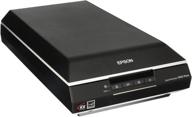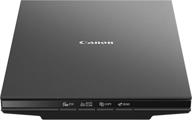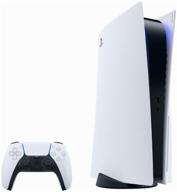
Review on 📷 Wolverine F2D Saturn Digital Film & Slide Scanner: Convert 120 Medium Format, 127 Film, Microfiche, 35mm to Digital JPEG - 4.3" LCD w/HDMI Output (Blue) by Paul Dobson

Clever concept ruined by ignorant firmware design
Let's start with a real review: for under $200 you can't expect a really high quality film scanner, but it seems reasonable, better quality than you might find that to be expected in 2001. Unfortunately, the same cannot be said for the Wolverine F2D Saturn digital film and slide scanner, which can convert 35mm negatives and slides, 120 medium format film and 127 film, and microfiche to digital format. JPEG images. I have a Plustek OpticFilm 35mm scanner, but it cannot handle medium format film. I was hoping that despite the expected poor quality, the Wolverine scanner would be able to produce acceptable images from much larger negatives. The picture quality reminds me of what we could get from the Sony Mavica. It was the first digital camera to record low-resolution, low-quality photos with many artifacts. Then the quality was hardly acceptable. This is now unforgivable. So is the Wolverine FD2 Saturn good for anything? Maybe if you understand and are willing to accept the shortcomings. It's a smart device because it really isn't a traditional film scanner. Instead, it features what's probably equivalent to a smartphone's digital sensor. Instead of waiting 30 to 90 seconds for a traditional scanner to process an image, Wolverine instantly captures the image and displays it on a small screen. Pressing another button writes the image file to the device's internal memory or secure digital card. (1) This is where the process falls apart. Instead of processing the image as a lossless TIFF, or even writing it as a high-quality JPEG image, the scanner writes an incredibly small file. When I scanned a 645 image, the resulting file was only 2MB. The manufacturer states that the maximum scan resolution is 4600 cpi, so the image size should be around 11,500 x 8300 pixels, the expected file size is over 20 MB and the dimensions are 5164 x 3876. (2) Smaller physical file. the size would still produce a very useful image if the manufacturer chose not to use such extreme downsampling, which creates horrible artifacts. A 10MB JPEG has virtually no visible artifacts. Bad design decisions result in blurry images. (3) Most buyers of such a device will want to use it for 35mm negatives and slides. How well does he work there? It's even worse. The scanned image was 5480 pixels by 3652 pixels. That's about 2600 spi, which is higher than the setting I usually use on a Plustek scanner. This device can scan at 7200 SPI, but it takes over a minute per slide. I usually use the 1800 SPI setting on the Plustek because it cuts the scan time down to about 30 seconds. (4) Plustek can also save files in the lossless TIFF format I use. At 1800 SPI the quality of an image saved in TIFF is far superior to that of the higher resolution Wolverine combined with extremely lossy JPEG. (5) Wolverine artifacts lose all fine detail. it's even worse. The scanned image was 5480 pixels by 3652 pixels. That's about 2600 spi, which is higher than the setting I usually use on a Plustek scanner. This device can scan at 7200 SPI, but it takes over a minute per slide. I usually use the 1800 SPI setting on the Plustek because it cuts the scan time down to about 30 seconds. (4) Plustek can also save files in the lossless TIFF format I use. At 1800 SPI image quality, The image saved in TIFF format far outperforms the higher resolution Wolverine combined with the extremely lossy JPEG format. (5) Wolverine artifacts lose all fine detail. it's even worse. The scanned image was 5480 pixels by 3652 pixels. That's about 2600 spi, which is higher than the setting I usually use on a Plustek scanner. This device can scan at 7200 SPI, but it takes over a minute per slide. I usually use the 1800 SPI setting on the Plustek because it cuts the scan time down to about 30 seconds. (4) Plustek can also save files in the lossless TIFF format I use. At 1800 SPI, the quality of an image saved in TIFF format is far superior to the higher resolution Wolverine combined with the extremely lossy JPEG format. (5) Wolverine artifacts lose all fine detail. but it takes over a minute per slide. I usually use the 1800 SPI setting on the Plustek because it cuts the scan time down to about 30 seconds. (4) Plustek can also save files in the lossless TIFF format I use. At 1800 SPI the quality of an image saved in TIFF is far superior to that of the higher resolution Wolverine combined with extremely lossy JPEG. (5) Wolverine artifacts lose all fine detail. but it takes over a minute per slide. I usually use the 1800 SPI setting on the Plustek, because it shortens the scan time to about 30 seconds. (4) Plustek can also save files in the lossless TIFF format I use. At 1800 SPI the quality of an image saved in TIFF is far superior to that of the higher resolution Wolverine combined with extremely lossy JPEG. (5) Wolverine artifacts lose all fine detail.
- Slide and negative scanner
- Cables shorter than others
New products
Comments (0)
Top products in 🖨️ Photo Printers & Photo Scanners

Experience Ultimate Color Accuracy with Epson Perfection V600 Colour Flatbed Scanner

15 Review

Canon 0307B001 CanoScan Color Scanner

11 Review

Canon CanoScan Lide 300 Scanner, Compact Design: 1.7 x 14.5 x 9.9 inches

22 Review

Black Canon Selphy CP1300 Wireless Compact Photo Printer: AirPrint and Mopria Device Printing

16 Review





